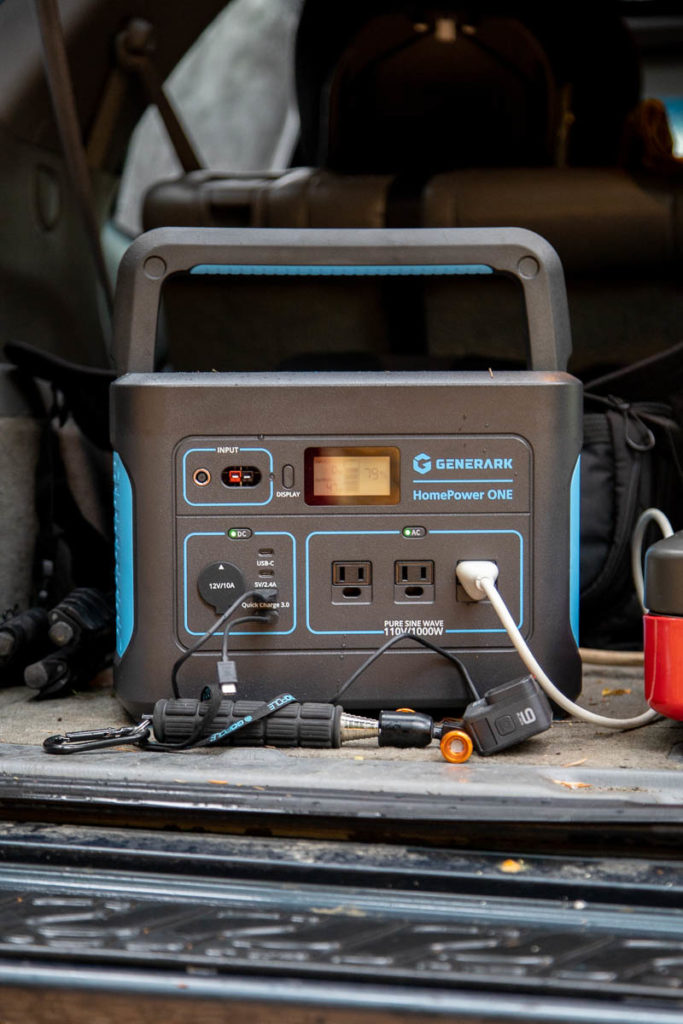All that camping and backpacking gear in your garage is perfect for emergencies.
If the power goes out for days or there’s a bad earthquake, you might have all you need to be comfortable while the situation gets sorted.
The sleeping bags, water filters, fuel and stoves, freeze-dried food, battery powered lights, and portable power stations you use camping are also exactly what you need to make it through an emergency. Power station-maker Generark wants you to do both with the HomePower One.
The Generark HomePower One Battery is a 1000 watt-hour portable power station great for camping or getting through emergencies at home.
Let’s walk through all it’s features, pros and cons, and if this might be a good power station for you in this post.
Pros
- Large capacity
- USB-C outlets
- Very easy to use
- Pure sine wave AC oulets
- 1000 watt continuous, 2000 watt surge.
Cons
- USB-C outlets only 18 watts
- AC power charger gets hot
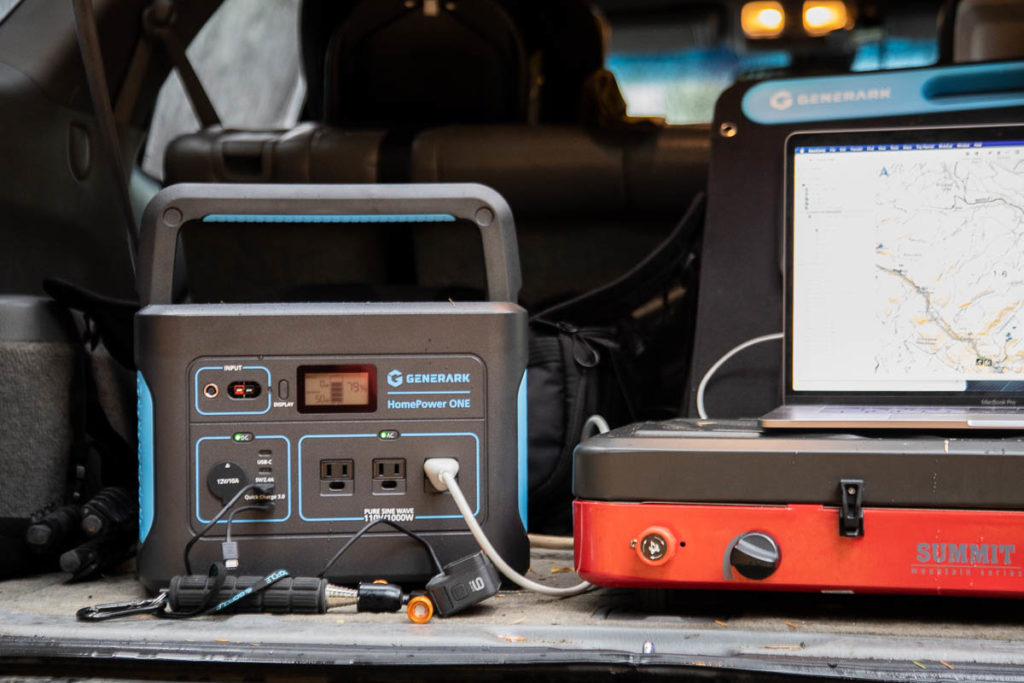
HomePower One Specs and Details
- 1002 Wh (278,480 mAh)
- 1000 continuous, 2000 surge power
- Lithium Ion NMC battery
- 23.37 pounds
- recharge from AC outlet, solar panel or car port
- 8mm DC input port (12V-30V) – 200W max
- Anderson input port (12-30V) – 200W max
- Output ports: car port (12V/10A), 2x USB-C PD 18W, 1x USB-A (5V/2.4A), 1x USB-A quick charge 3.0, 3x pure sine wave AC outlets (110V, 60hz)
- $999 USD
Output Ports
The best part of the HomePower One is all the output ports including USB-C. Despite the proliferation of USB-C devices these days, many battery companies don’t include a USB-C port.
The output ports include:
- car port (12V/10A)
- 2x USB-C PD 18W
- 1x USB-A (5V/2.4A)
- 1x USB-A quick charge 3.0
- 3x pure sine wave AC outlets (110V, 60hz)
Let’s talk about each of these ports but you probably already know if you need them or not.
The car port is just like the cigarette lighter in your car so if you have something that works with that like a portable fridge, then you can just plug into the battery instead. A common set up is plugging the battery into the car port and then plugging everything into the battery. Everything charges off the battery and the battery will store the rest.
The 18 watt USB-C ports are an excellent addition. Most things are coming as USB-C these days and 18 watts will charge larger items faster.
It’s still not enough to charge a bigger laptop well. Those chargers output between 60 and 85 watts but you could limp along with it if you really needed. Anything smaller than a large laptop will charge well on these 18 watt ports.
USB-A ports (regular rectangular USB ports) are still used for many devices and if you have anything purchased in the last few years, it’s likely still USB-A. If your phone or device can use the Quick Charge 3.0 port it will charge faster. If not it just charges at the same speed.
The 3 AC outlets are the same as in your home. The pure sine wave inverter outputs nice smooth power that any electronics can use. The cheaper modified sine wave inverters don’t work for as many devices because of the rougher power output. It’s nice to see the HomePower One has the more compatible pure sine wave inverter.
A fan comes on when using the AC outlets to cool down the electronics inside. Apparently the DC to AC inverter needs some cooling. It will go on and off as you use those ports. I didn’t find the fan very loud and just blends into the background noise of the house. In a busy home, I could barely hear it. In a quiet campsite, it’s more noticeable but still not an issue for me.
The AC ports have a max 1000 watt output. The small screen shows you the battery charge and what your input and output is so you’ll know if you’re getting close to the max output. Power usage can spike up to 2000 watts but if the continuous usage is over 1000 watts the battery shuts off. It doesn’t break anything but you’ll need to unplug something and turn the ports on again. Blenders, TVs and hair dryers can all easily run on the HomePower One. 1000 watts isn’t much for heaters and cooktops so check the wattage on those if you want to use one.
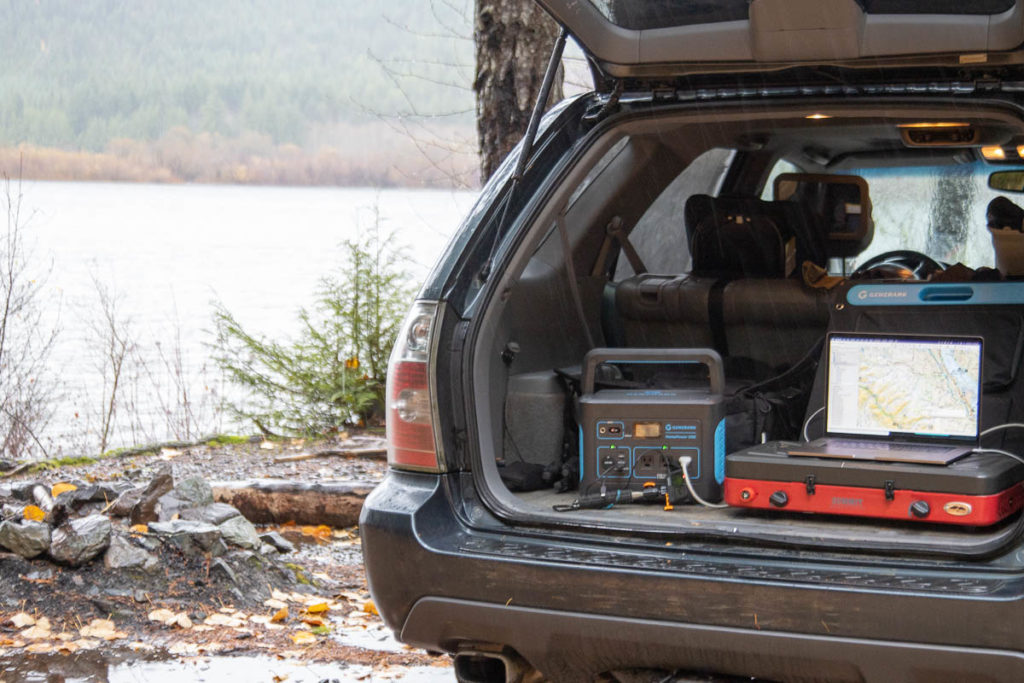
Input Ports
The HomePower One battery has 2 different input ports: one 8mm DC input and an Anderson-type port.
The 8mm DC input is the best for a single solar panel with an 8mm DC connection. Just plug the panel in and it starts charging. The SolarPower One panel from Generark uses the 8mm plug. Jackery solar panels do as well.
The Anderson port works well if you have a Y cable to combine 2 solar panels into one plug. The SolarPower One panels come with an 8mm to Anderson cable combining two 8mm plugs into one Anderson plug. Any 8mm DC cable can plug into the Y cable.
I was disappointed to see the 8mm and Anderson port can’t be used at the same time to use three panels. Charging is limited to one 200 watt panel through the 8mm port or two 100 watt panels through the Anderson port.
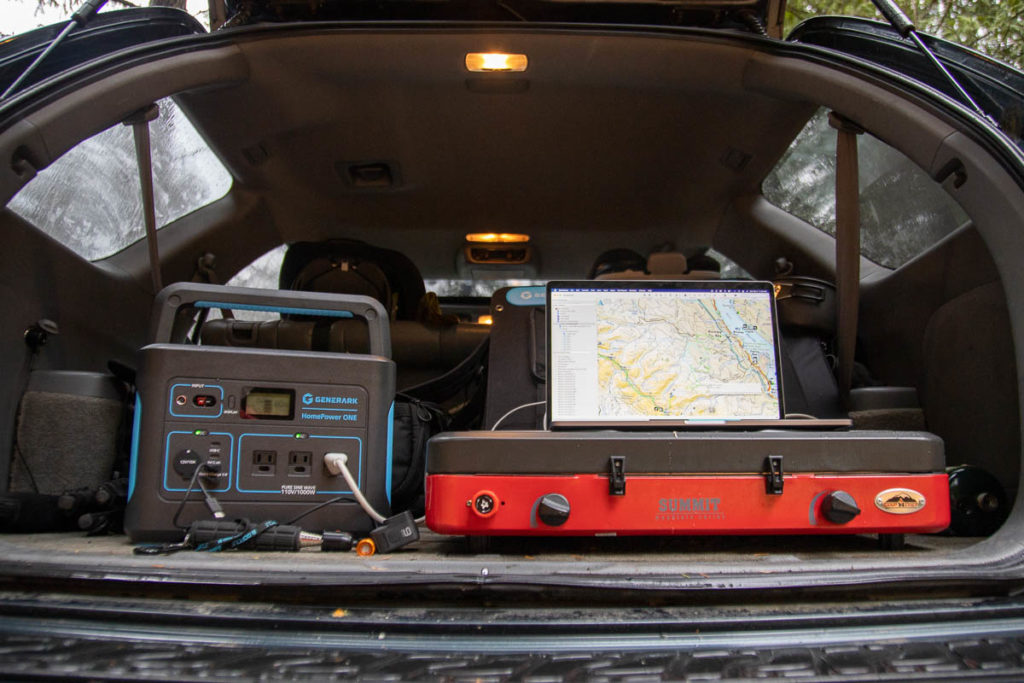
How do you charge the HomePower One?
Charging the HomePower One is so easy. Plug it into the wall, the car or solar panel and let it charge. It will automatically charge up to 100% and shut off.
The AC power block is included in the box and has a large black power block like a laptop charger. This plugs into the 8mm input on the HomePower. The power block can get quite hot during charging so be careful what this is sitting on.
A car charger is also included in the box in a small zippered black bag with the the AC charger. If you’re on a road trip or overlanding, plugging the battery into the car and then charging devices on the battery works well.
The battery hardware itself will last the longest if you keep the charge level above 20% at all times and mostly charged when it’s stored. The charge should last up to a year when it’s sitting which is great for emergencies. Generark recommends charging up every 6 months so it stays above 20% and you always have a decent charge if you need it.
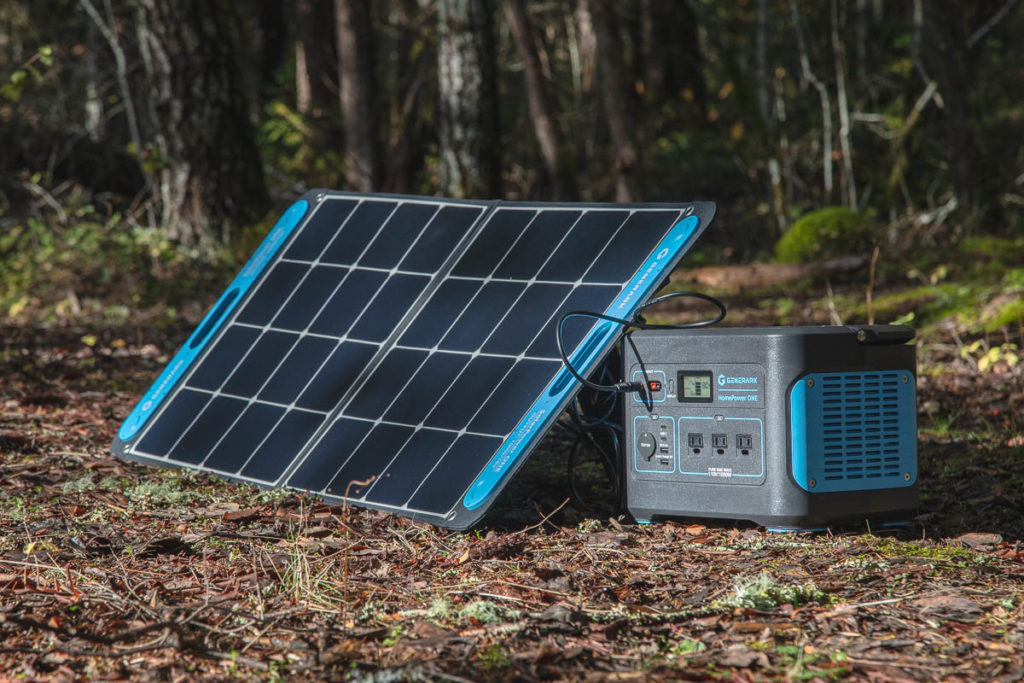
What solar panels connect to the HomePower One?
The HomePower One can be charged with any solar panels up to 200 watts that can plug into the 8mm DC or Anderson ports.
Generark’s SolarPower One panel comes with an 8mm DC plug on a 3 meter cable and works well with the HomePower One. Plug in and let it charge. The SolarPower One also has USB-C and USB-A ports directly on the panel.
Jackery’s SolarSaga 100W solar panel also comes with an 8mm DC plug and works the same.
Many other panels have plug adapters and can plug into the 8mm or Anderson ports.
Final Thoughts: Generark HomePower One Battery Power Station
Rating: 9/10
Verdict: Highly Recommended for car campers and those prepping for emergencies
The HomePower One power station is a solid choice if you’re looking for a good power station for car camping, overlanding or emergencies at home. It’s a bit more expensive than some competitors but in line with others. The ports and control panel are very easy to use: just plug in, turn on the outlets and you’re done. There’s no babysitting any of the charging, input or output.
I love having a giant battery for working with a camera and laptop on the road and car camping which is where I use my batteries mostly. Charging all my lights, cameras, drones and phone is easy with all the ports. Knowing I have a bunch of batteries charged up and ready to go in case of emergency also makes it easier to sleep at night.
